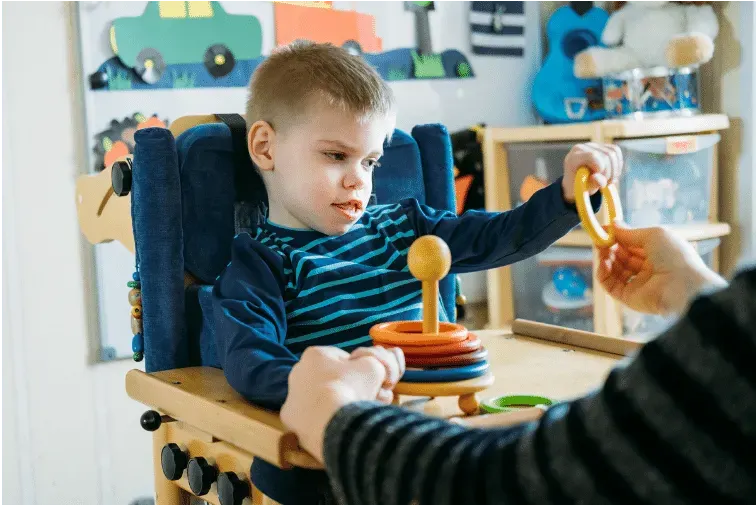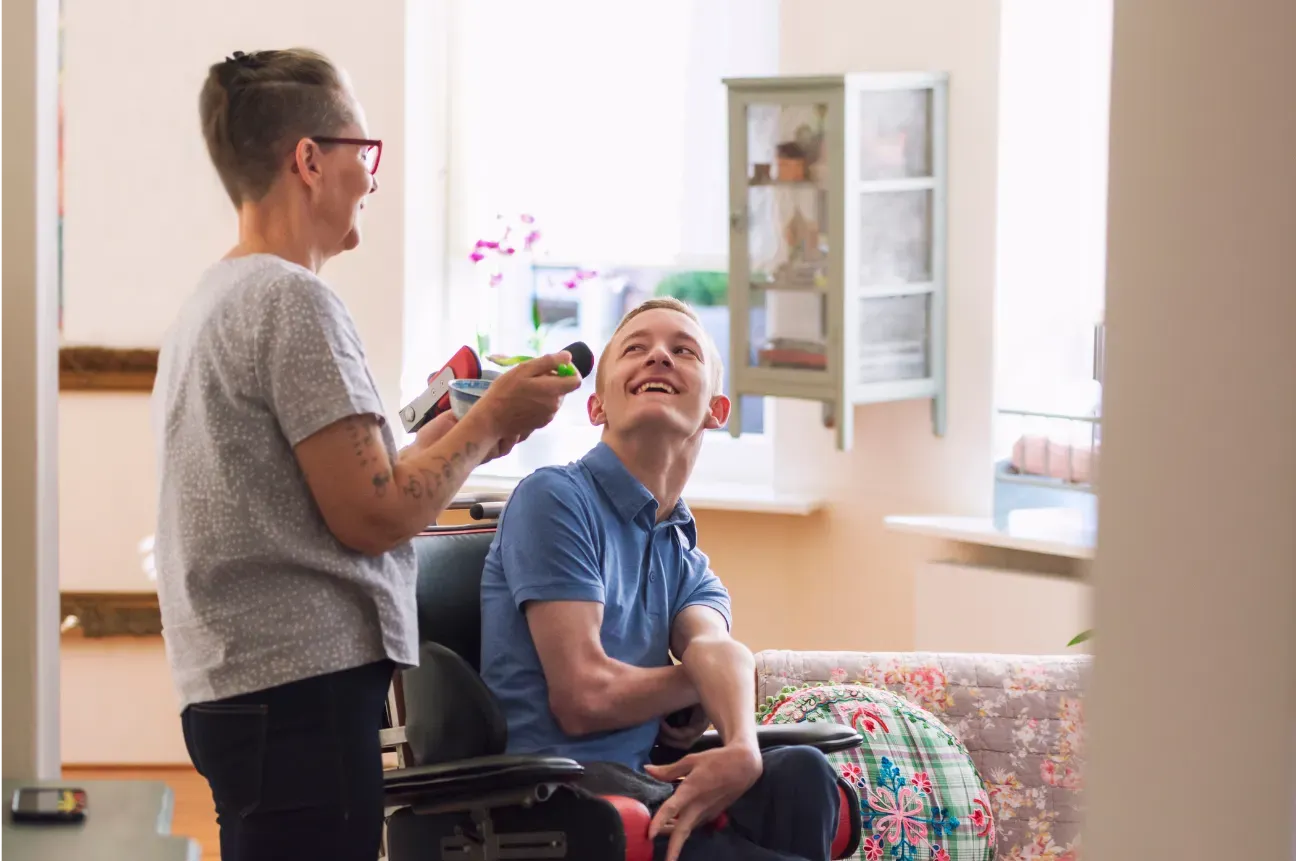Help your child move better with less pain
It's heartbreaking to see our kids in pain or discomfort, but for many children with special needs, it's often a way of life. Cerebral palsy, scoliosis, orthopedic impairments, autism, developmental delays, and many other conditions, may be impacting your child's ability to move without discomfort.
-
Does your child cry during therapy sessions?
-
Is your child fussy and unhappy a lot of the time?
-
Does your child have trouble sleeping?
It is possible to help your loved ones find pain relief and become more comfortable in their bodies.
Or maybe you're discouraged with your child’s lack of progress and development. Are you concerned that he is delayed in reaching his developmental milestones, wondering why...
-
my 12 month old is not walking
-
my 7 month old is not sitting
-
my 10 month old is not standing
-
my 6 month old is not rolling
-
my 8 month old is not crawling
I am here to assure you there is hope. There's a world of possibility and the potential to dramatically improve your child’s developmental path.
How can I be so sure?
Because your child possesses a brain, an extraordinary organize which is “soft wired” and built for change. It has the power to literally change itself regardless of disability, age, illness, or injury when provided the conditions that it needs for learning.
Your child is brilliant
It’s all too common to look at individuals with cognitive and physical limitations and come to the mistaken conclusion that they lack intelligence.
I’m here to say, it’s quite the opposite.
When you truly realize and understand the pain, discomfort, and obstacles they have overcome to perform functional activities that we just take for granted, it’s clear they have a brain that’s highly intelligent, a brain that has found a way, despite all trauma it has been through, to figure out a way. That's brilliance.
The brain’s job is to sort through sensory information it receives, put order into the disorder and make sense out of the nonsense. That’s what it's built to do. And a healthy brain does it quite well.
But when a brain is injured through trauma or disease, its capacity to efficiently and appropriately respond to incoming sensory input becomes inhibited, and limitations in movement and thinking result.
NeuroMovement® is a science-based, whole-body learning method that uses gentle movement and the 9 Essentials to grab the brain’s attention, quiet the internal noise and confusion, create new neural connections, and rebuild damaged connections.
In the process, spontaneous, extraordinary, and seemingly impossible changes occur in the child.
Whether the limitations are physical, cognitive, behavioral, or emotional, I have witnessed incredible breakthroughs in children's movement, self-regulation, interpersonal connection, speech, and the list goes on...
Move from the Impossible to the Possible
Children are not defined by their diagnosis and aren't limited by their prognosis.

Developmental Delays
Children move through certain stages of development on their way to adulthood, but some children progress at a slower rate. NeuroMovement® does not force or expect kids to do what they can't do or expect them to meet developmental timelines.

Cerebral Palsy
CP manifests itself in different ways but affects a person's muscle tone, movement, posture, and balance. Through the creation of new brain-muscle connections, improvements in flexibility, coordination, and speech are possible.

Scoliosis
Severe scoliosis can be painful and disabling. In some children, spine deformities get more severe as they grow, causing breathing difficulty and heart and lung problems in the most severe cases. It’s possible to experience less pain, more mobility in the back, and easier breathing.

TBI/Stroke
Injury to the brain may be minimal or severe and affects the individual in a myriad of ways, often causing developmental delays or regression. The plasticity of the brain opens the possibility for regaining lost functions through the creation of new or repaired neural connections.

Genetic Disorders
Every diagnosis presents unique developmental and learning challenges. NeuroMovement® focuses on what the child can do and builds from there to create new possibilities and higher levels of functioning.

Autism Spectrum Disorder
Children with ASD may have challenges organizing their movement, thinking, and emotions. NeuroMovement® helps the brain sort out the noise to help these children regulate themselves more effectively.
From a "fixing" to a "connecting" model
When we learn something is wrong with our child, it’s tempting to want to "fix" him. This causes us to focus on what he can't currently do, or what he is doing wrong, or we try to stop the behavior altogether. It's a very common practice and seems to make total sense. I mean, if you want him to stand up, you put him in standing; if you want him to walk, you put him in walking; if you want him to sit, you prop him up in sitting.
Well, fixing is one approach that certainly has merit and is necessary at times, but it also has limitations that may be counterproductive.
There is another way.
By focusing on and working within what they can do now, connecting with their brain wherever they are, creating conditions for the brain to receive the information it needs to create new solutions, your loved ones may begin to move past limitations they currently experience.
And the thing with the brain is, the changes that occur may not be exactly what you expect. As the brain creates new connections and improves its organization, new configurations of movement and thinking become possible. In the process of improving your child's ability to sit, for example, it's possible she may start talking more, eating better, sleeping better, or fussing less.
When working with the brain, it's a process, a journey of possibility.
Regardless of disability, your child has a brain that’s built to actively create new patterns and connections to overcome the limitations he currently has. If we can stop trying so hard to make him do what he can’t do, and instead provide the conditions he needs for his brain to figure itself out, we'll be surprised at the new solutions he creates.
Because the truth is, it doesn’t matter how much we may want to help or our level of expertise, our efforts are 100% dependent on the child’s brain to make the changes.

It's never too early to start
Babies develop new brain connections at an astounding rate. This time of rapid grown is a particularly advantageous time to start helping their brains learn and organize optimal patterns of movement.
If your child experienced birth trauma, brain injury, a premature delivery, or had to spend time in NICU after birth, she may be at risk for developmental problems.
It's never too late to begin
The brain has the capacity to change no matter how old you are. Like any learning, the earlier you can start the easier it is because the brain is especially malleable and ripe for growing and changing when we are young.
The older we get, the more engrained our neural movement patterns have become, so it takes longer to rewire new pathways and eliminate old, unhealthy, limiting pathways.
It's not possible to know each individual's response, because every brain has had different experiences, but I have seen remarkable change in individuals of all ages.


